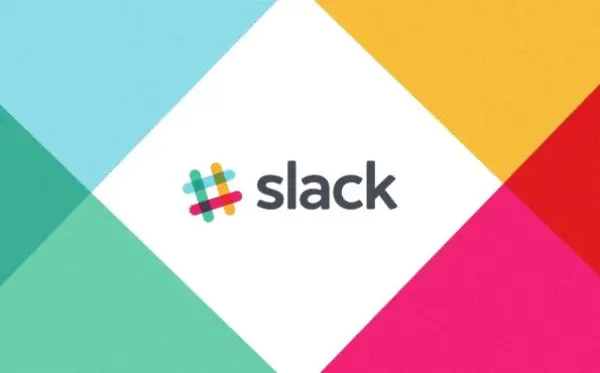The outrages growing of Slack is not a secret anymore with the company achieving $4 billion worth in practically four years.
Their debut wasn’t less impressive, the Slack stand encountering 8,000 access requests correct from the first day of the app’s launching. And if the numbers did not amaze you, maybe the fact that they did not have any outbound sales team will blow your attention.

Then where’s the habit you wonder? Any crafty lead generation ideas? Particular guru marketers? Well, none of that in the beginning, but, certainly, a clear focus on interrelating with individuals instead of teams, learning as much as likely about them and creating an app based on their wants and feedback.
What is Slack?
As its motto proposes, “Where work happens”, Slack is a cloud-based business app mixing a suite of features and tools destined to ease the communication within a team or section, replacing the traditional use of emails or phone messages.
In a simpler method, it can be defined as a messaging app permitting you to share privately or in group discussions (chat rooms) altered types of content.
Its name was generated from 5 acronyms meaning “Searchable Log of All Conversation and Knowledge”.What began as a tool used internally by Butterfield’s company is now considered the wildest rising business app.
7 Marketing Tactics Behind the Success of Slack

1. Strong roots: experienced co-founders
As expected, such a achievement was not achieved by fault. Its roots are constructed on years of experience and failures faced by a experienced founding team. Before building the Slack software, the co-founders, Butterfield, Eric Costello laterally with Cal Henderson and Serguei Mourachov spilled their originality in establishing a solid foundation for Flickr.
However, despite a excessive business model, the project was bought, in 2005, by Yahoo, for only $35 billion. Later on, the founders reflected the selling decision and its follow-ups some regrettable faults.
2. Overcoming market barriers with free subscriptions
Since its launching, Slack promised to diminish and simplify the communication problems within a project’s development. Additionally, the software appeared in crisis time, where the emails’ landslide was the first thing to ruin your day at work. Despite all these favorable factors, the company definite to offer also a free version for Slack.
Obviously, the paid another unlocked additional features, but the free version was a stratagem that triggered a high number of users correct from the beginning.
3. A brand voice speaking from the soul
From its initial beginning, Slack differentiated itself through approaching customers in a friendly and near manner. They managed to save an eye on the struggle without losing the focus on the client.
Understanding the lifecycle of consumers, what do they must, when is it ideal to spread them, to avoid pissing them off, and what channels to use, all these were amongst the attention points used to develop the communication stratagem.
Also, additional focus point resumed at the idea that each customer interaction is a accidental to promote your product. Therefore, the duty did not fall, entirely, on the marketing team, a small part going to each Slack employee interacting with clients.
4. Emphasizing the NPS score
One of the greatest important metrics, used by Slack, is the net promoter score. Correct from its debut, the brand counted on word of mouth growing. Since the product addresses individuals, slightly than companies, the word of mouth is the most efficient method to grow the brand’s awareness.
5. Playful ads > corporate-y advertising
Their marketing proposal clearly had no trace of conventional. From the app’s interface, combining dazzling colors laterally with a curvy sans-serif font and fun emojis, to a bubbly ad campaign with inflatable unicorns, kittens and an overall Disney movie background, Slack kept itself missing from the boring B2B ads.
As the app was created on a rough background of research, the advertising campaign was made following the similar protocol. According to Slack’s Holly Chen, head of digital marketing, playful ads reach a higher presentation in comparison to the serious, mainstream B2B ads.
6. The feedback: ask for it, implement it.
Another “must-have” tactic for thriving achievement consisted in constantly monitoring consumer’s feedback and, most important, implementing it.
The customers’ feedback providing a reliable source of information on the clients’ wants and on what should Slack solve to become indispensable from their everyday working routine.
7. Using explicit advertising materials
Slack focused on marketing for individuals, slightly than companies, offering advertising materials which explained the entire determination of the app, what it does and how both individual, along with its team, can benefit from using it.
Final Thoughts
Despite their outrages success, the marketing strategy implemented by Slack wasn’t something innovatory.
A mixture of marketing strategies implemented at an individual level, slightly than B2B, focused on openly explaining the product’s geographies and how will these do the trick for the user, along with a useful app, an interactive interface and eye-catchy ads, all these seemed to have made Slack indispensable for a remarkable number of individuals
This article is contributed by Dave Schneider. He is the founder of LessChurn, churn reduction app. In 2012 he quit his job to travel the world, and has visited over 65 countries. In his spare time, he writes about SaaS and business at DaveSchneider.me.
